EBR charges a service fee to manufacturers to produce ebike reviews and videos, this began in 2018. It’s the same flat fee for each bike, and it helps us to keep the site going while limiting ad clutter. We appreciate the opportunity to serve you with our opinions and data but respect your right to know that we receive compensation :)
Bulls has been one of the first electric bicycle manufacturers to adopt the new Bosch Active Line Plus motor, and I was impressed with the initial rides on the Cruiser E model, which also uses it. This motor was developed to compete with lighter, quieter, more compact alternatives like the Shimano E6000 and Bafang Max Drive. It suits this particular bike well, because it’s geared for neighborhood and city use. The Cross E8 is a fantastic platform for commuters, because it comes with lots of safety, utility, and comfort upgrades. The frame geometry is more upright, with an adjustable angle stem and swept back handlebar. You can get it in three sizes, and choose from a sportier mid-step frame (what they call step-thru) or the deeper wave frame seen in the video and photos above. The big trade-offs are approachability vs. frame stiffness, and for some reason, they didn’t include bottle cage bosses on the wave model… That’s a minor gripe here however, because the handlebar is wide open and could accommodate an easy to reach cup holder like this. The step-thru frame uses a mid-mounted battery that keeps weight lower but it still has a rear rack for hauling cargo. Bulls has chosen the more compact Purion display panel for this bike, which isn’t removable, but is more simple to use and costs less than the Intuvia. There’s plenty of room on the rear rack for a trunk bag or panniers, and narrower pannier hangers have been added along the sides to work with the clip-on design bags like this. I have some concern about the position of this hanger rod because it’s so close to the battery pack and inline with the main support arm above (vs. being set out a bit for easier clip-on). I welcome your feedback about how your panniers work with it… There’s also a potential for fabric hang-over bag panniers like this to rub on the fenders and tires as you ride (especially with a cross wind). The battery positions a bit of weight towards the back of the bike, and higher than would be ideal, but that’s often the trade-off for wave style frames with the wide-open main tube. Rounding out the package are plastic fenders and a chain cover that will be durable and lightweight, but a bit noisier than heavy duty aluminum alloy (you can hear them rattle a bit during portions of the test ride). The eight-speed drivetrain is very capable in combination with an efficient mid-motor, and uses Alivio level components that are several steps up from entry. With this and other Bulls e-bikes, you get quality hardware on the most important parts of the bike… except the tires in this case, which are just average. it comes with a comprehensive two-year warranty and ever expanding dealer support in many parts of the world (Bulls is a German brand) as well as the United States and Canada. The price point is a bit higher than some of the older Bulls city models, but motor power and battery size have both been upgraded while weight had gone down by several pounds compared to the Cross E from 2017.
Driving this bike is the Bosch Active Line Cruise… Plus! It’s the higher torque, sportier version of the Active Line (which were both redesigned for the 2018 season). Rather than using a smaller proprietary sprocket and reduction gearing as the older model and current Performance Line motors do, it uses a very standard sized chainring. Weighing in at 7.05 lbs, it’s roughly 1.75 lbs lighter than the 8.8 lb high performance motors, but only offers up to 50 Newton meters of torque vs. 63 and 75 for the CX. It also only supports pedal speeds up to 105 RPM vs. 120 RPM but is extremely responsive, still measuring rear wheel speed, pedal cadence, and pedal torque over 1,000 times per second! One of the things I love about all of the Bosch drives is that they start and stop almost instantly when you start and stop pedaling. They feel natural when operated at the lower levels of assist but start to feel zippy and fun at the highest “Turbo” level. Mid-drive motors are great for keeping weight low and center, and simplifying both wheels (which offer quick release in this case). As you shift gears to pedal more efficiently, the mid-drive motor benefits. However, it also pulls the chain through the same sprockets and derailleur. This can increase wear on those parts, but Bosch is one of the few drive systems producers right now to offer shift detection. By listening for pressure changes, the motor controller eases back on power when it thinks you might be shifting gears. Pretty neat… and useful when you’ve got eight speeds and are pedaling around a 56.4 lb bike. Yes, you can pedal this thing without even turning on the motor, it does not create additional drag. I want to call out the alloy chainring guard that Bulls added to reduce chain drops but would love to also see a full chain guide (another metal plate on the inside). I cannot say for sure, but the sidewall of the motor casing may provide this sort of guidance and make an aftermarket guide unnecessary.
Powering the motor, integrated front and rear lights, and the compact backlit display panel is a high-capacity Lithium-ion battery pack. This is the rack mounted Bosch Powerpack 500 (if you get the wave frame), and it weighs just a touch more than the mid-frame downtube mounted Powerpack 500 at ~6 lbs vs. ~5.8 lbs. Bosch has always done a fantastic job with their battery packs and you can see the attention to detail here with an integrated LED charge level indicator and integrated handle at the rear. You can charge the battery pack while mounted to the bike frame or separately, and the charger is a compact and lightweight (~1.7 pound) unit that provides faster than average 4 amp fills. Part of what you’re paying for here is reliability, proprietary safer and sturdier plug design (that doesn’t require a dongle adapter for charging on the bike vs. the battery directly), and backward compatibility. Yes, the older Powerpack 400 rack batteries will work with this bike. You might be able to find a good deal on one of the older batteries, or perhaps you already have one? And, this could extend your range or be an option for traveling with the bike. Leave the battery at home and borrow or rent one on location… most bikes can be air shipped, but high capacity batteries cannot. In short, this is one of the best batteries around, but it’s expensive to replace at ~900. To really care for it, I suggest storing in a cool, dry location and avoiding extreme heat and cold. Top it off every few months if you haven’t gone for a ride, and try to stay above 20% capacity to avoid stressing the battery chemistry.
Activating the display and motor on this bike is fairly straightforward. You charge and mount the battery then press the power button on the top edge of the little display panel, which is mounted within reach of the left grip. This is the Bosch Purion display panel, one of the nicer compact offerings on the market right now. It cannot be swiveled to reduce glare easily, is not removable for protection, does not show as many menus, and does not have an active Micro-USB charging port like the larger Bosch Intuvia display. However, it keeps the handlebars clean and may not get damaged as easily. For those who really want it, I believe that many shops can order the larger Intuvia (which came stock on the older Cross E) and install it for you. The Purion is a very popular display panel for electric mountain bikes, which often strive to go “below the radar” and limit fancy e-bike accessories that could get broken or attract unwanted attention on the trail. I have grown to accept it and see how it might even be beneficial on a relaxed bike like the Cross E8 where some users might not be as tech savvy or interested in a complex readout. However, I do have a few tips for use… The + and – button pads that raise or lower power for assistance click in at an angle. They are attached near the left edge of the control pad and pivot in towards the LCD. The right edge is their sweet spot, sometimes even the middle can be difficult to click in or just inconsistent. The screen itself glows faintly in white at all times, which shouldn’t draw much power, and is handy when it’s early morning or later at night and you need to read it. Once you get the hang of things, you really don’t have to look down at all because you can notice the tactile clicks of the button pad and feel the boost in power while pedaling along. Holding the + button will turn the lights on and off. Holding the – button will cycle through trip distance, odometer, assist level, and range. This range section is dynamic, so you can see the bike calculate how far it thinks you can go based on the last mile of riding, your current state of charge, and the chosen level of assist. I did this in the video review and got an estimated range of 48 miles, even on the highest level of assist! That’s amazing, and it’s because of the Bosch Active Line Plus motor being so efficient… On the lower edge of the control pad, mirroring the power button, is a walk-mode button. Press it once and then hold the + button to have the motor slowly assist you when walking the bike. It’s useful for crowded non-bikeable areas, or if you get a flat tire, and not all companies have it enabled. I like that Bulls has left it open, and found that it’s useful even for climbing stairs with the bike or just pushing through the grass. The main readout on the display is your current speed and the numbers are very clear and big (even though the screen looks small). It works great overall, perhaps I am just a bit spoiled by the larger displays because I do enjoy technology and am also near sighted ;)
One thing that always stands out to me about Bulls products is the balance of quality, style, and price. This is not the cheapest city e-bike, but it does deliver a lot of value. It’s one of the only electric bicycles I have seen with a frame lock (also called a cafe lock) for the rear wheel and a chain that interfaces with it. Nice locks can cost over $100 and being able to use the same key as the battery pack is just convenient. The hydraulic disc brakes are another delighter, you get a larger 180 mm rotor up front for added stopping power and cooling, and both levers are adjustable for easier use if your hands are larger, small, or wearing gloves. The flick bell is nice but pretty cheaply made, and the grips feel comfortable but aren’t locking like the nicer parts on the higher-end models. I really like the kickstand design and position, you can park the bike and then pedal backward to do drivetrain maintenance because the chainring actually turns. So many other mid-motors don’t have this feature (even the Bosch Performance Line). I did notice a bit of a hard stop feeling when the motor goes from active to inactive in the higher levels of assist. I’m sure Bosch was trying to make it as responsive as possible for safety, and it accomplishes this to such a great extent that you don’t even need motor inhibitors on the brakes. It’s satisfying to pedal with just a little bit of force and have the motor match you vs. zipping on and off in a hard sort of way… but again, the hard stop is there for safety when you aren’t pushing anymore. This bike is so efficient, that I had no problem reaching ~23 miles per hour during the test ride. That’s a great feeling, because it shows how the motor, wheels, and other parts are not producing a lot of drag or inefficiency. The biggest considerations are whether this more active style suits you vs. a lower and squishier beach cruiser with 26″ wheels and balloon tires. Those tend to weigh more and forego many of the nice accessories found here. Bulls does have the Cruiser E model, but it had a bit of frame flex and speed wobble during my test, and I was actually surprised that it also used efficient 700c 28″ wheels, though they were 2″ width vs. 1.4″ here. Big thanks to Bulls for inviting me out to see many of their latest ebikes back to back, and partnering with me on this review. I’ll do my best to respond to comments below and in the Bulls forums, where other owners and enthusiasts might also help :D
Pros:
- Great ergonomics and comfort accessories, the suspension fork is basic but definitely improves ride quality (you can increase preload by removing the caps and using the clickers), the gel saddle, adjustable angle stem, swept back handlebar, and ergonomic grips all contribute… you could swap out the rigid seat post to a 30.9 mm suspension post like this for even more comfort
- Hydraulic disc brakes provide the best stopping power without straining your hands, these ones use upgraded Shimano hardware, have a larger 180 mm front rotor to increase the mechanical advantage and cooling, and you can adjust the reach of the levers if you have small or large hands
- Beautiful design, the black and white color scheme is unisex and professional, the fork and rear rack match nicely, the frame is easy to approach and stand-over for people with knee and hip issues or balance concerns
- Integrated lights run off of the main battery pack and can be activated through the display panel (just hold the plus button for a few seconds once it is powered on), permanent lights like this are less prone to theft and less wasteful because they don’t use disposable cells
- In addition to lights, I love that this ebike has nicer tires with reflective sidewall stripes, this increases your visual footprint from the side, great for commuting and city riding applications
- You should stay cleaner on this bike because of the plastic SKS fenders and minimalist chain cover, they aren’t as sturdy as alloy fenders and do make some rattling noise (not too much when I rode over the cobblestone pattern), but aren’t as expensive or likely to bend, and they also weigh less
- Great rack design, it’s welded to the main frame and won’t come loose or rattle like some bolt-on racks, it has dedicated pannier hangers on the sides, is i-rack accessory compatible, has a spring latch on top, and is positioned far forward enough to allow for the saddle bag accessory or for you to drop the seat really low without getting in the way
- This battery can be charged on or off the bike and uses a faster 4 amp charger so you don’t have to wait as long, the charger is compact and relatively lightweight at ~1.7 lbs, it’s one of my favorites
- Both the battery and frame lock (with included chain insert) use the same AXA key, so you don’t have to worry about mixing up multiple keys or losing more stuff
- Both wheels and the seat post collar use quick release, so you can do repairs easier or break the bike down for transport, consider replacing these with locking hardware like this if you’re in a city environment and worry about theft or tampering
- The new Bosch Active Line Plus motor is compact, lightweight, and very efficient! It’s one of the quieter mid-drive systems that Bosch makes but is still pretty capable (great for relaxed neighborhood and mild city use), it uses a normal sized chainring and doesn’t have the reduction gearing drag that some Performance Line motors do
- Decent drivetrain, the 8 speed Shimano Alivio component group is three steps up from entry level and provides good range for urban use, I like that the Bosch Active Line Plus motor lets you pedal backwards and move the chainring (for easier chain cleaning and servicing)
- Bulls has a great international presence and expanding reach with new dealers in the USA, the Bosch drive systems offer 2 years of comprehensive warranty coverage and can be serviced at many dealers (even those that do not carry Bulls specifically)
- Minor pro here, but the kickstand is mounted out of the way and directly below the rear rack, so it should stabilize both the battery and any cargo that you add, it’s a nice design
- Bosch electric bike motor controllers offer shift detection, which reduces strain and wear on the chain, sprockets, and derailleur, this is pretty unique in the bike motor space
- You can hardly see the motor from the right side of the bike, because it’s about the same size as the chainring, and if you had panniers on the rack, this ebike would blend in almost completely because all of the wires are internally routed and it’s laid out so well, the quiet operation also makes it stealthy
- This ebike comes in three sizes, so you can really optimize fit and feel comfortable handling and riding, I’m an average sized guy ~5’9″ and tested the medium size frame in the video review above, for reference
Cons:
- Adjustable stems can sometimes rattle loose and then the metal teeth will start to wear and strip, just keep an eye on this part and tighten it occasionally if you notice that it’s not as tight as it used to be
- The Bosch Purion display panel is simple to use, easy to reach, and it stays out of the way… but it is not removable, cannot be easily angled to reduce glare (unless you don’t tighten it down as much), and it doesn’t have a functional Micro-USB power port like the larger Bosch Intuvia (some dealers can help you upgrade if you want)
- Minor complaint here, the Fuxon headlight is mounted to the suspension fork arch which goes up and down when you ride over bumps, this can shake the light and create an inconsistent beam vs. having it mounted to the head tube or handlebar
- Rear-rack batteries position weight further back and up high, which isn’t ideal for handling, but this frees up the middle of the frame and I feel like the alloy rack design here is stiffer and less prone to flex vs. a bolt-on rack
- It seems like there was plenty of room on the seat tube and up high on the main tube (downtube) for adding bottle cage bosses on the wave frame, and they could be used for things like mini pumps, folding locks, or water (or left empty if you were worried about kicking them) but Bulls didn’t add them for some reason, I believe that the mixte step-thru frame does have them, which is nice
- Minor consideration here, the chainring has an alloy guard on the outer edge but nothing on the inside, an extra plate here could have made for a full guide which would prevent chain drops
- This is a theoretical consideration, the pannier bars on the side of the rack didn’t have much space behind them for clips to easily slide down, I have seen other pannier rods that bow out a bit to make it easier to use… there’s also a big opening below the rack where some panniers could rub on your tires vs. having a pannier blocker rod there
- Most deep step-thru wave frames compromise a bit of frame stiffness in order to keep the standover height as low as possible (and not add too much reinforcement metal and weight), the wave frame option for the Bulls Cross E8 does suffer from a bit of flex, but at least it has the welded-on rack and a reinforcement tube at the middle of the frame
- The stock pedals are fairly light, but don’t offer as much space or durability as something like this, I noticed that the demo bike had sharp parts where the pedals had been bent and scraped up
- The plus and minus buttons on the control pad don’t click directly in, but rather pivot towards the LCD screen, the result is that it’s easy to press up high (towards the right edge) but doesn’t click in down near the left, I prefer this could be frustrating if you have shorter fingers or aren’t looking down while you press and it’s just not as nice as the Bosch Intuvia button pad in my experience
- The 700c wheelset with 1.4″ tires favor efficiency over stability and lower frame height, they aren’t as comfortable as the fatter tires that many competing models run and don’t have puncture protective linings
Resources:
- Official Site: http://www.bullsebikes.com/
- More Pictures: https://photos.app.goo.gl/P7f9597x3Y7i0t3W2

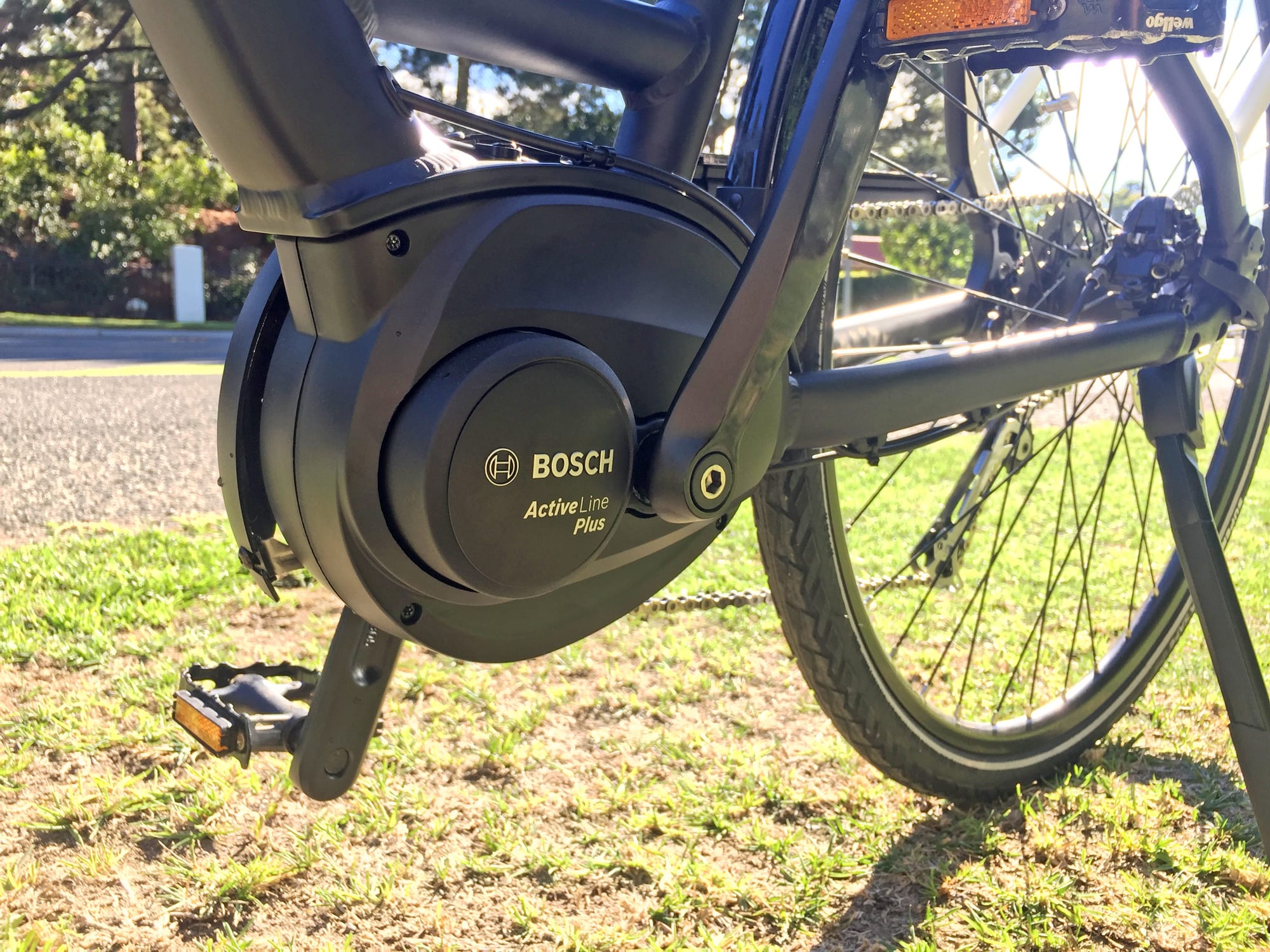
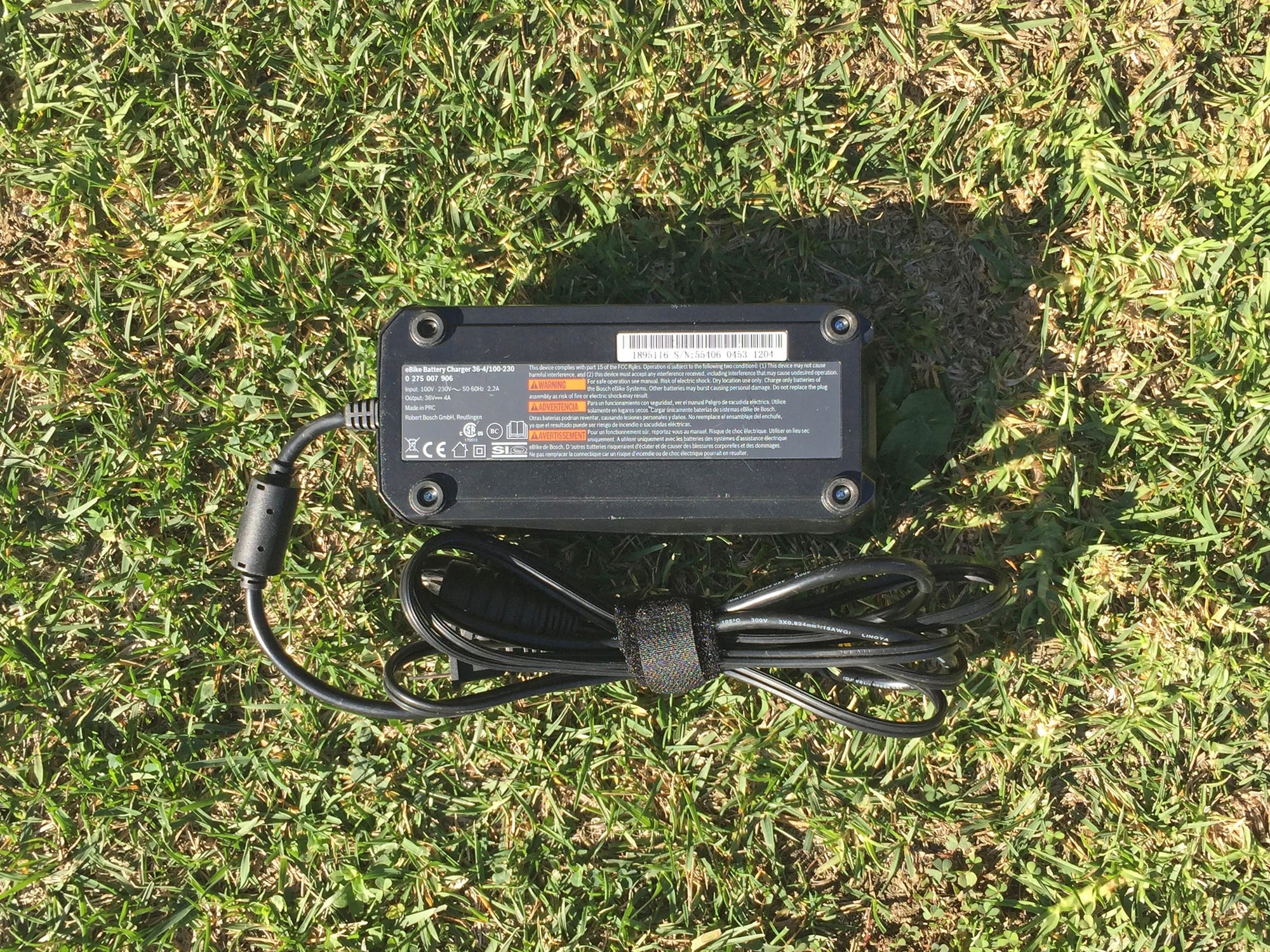
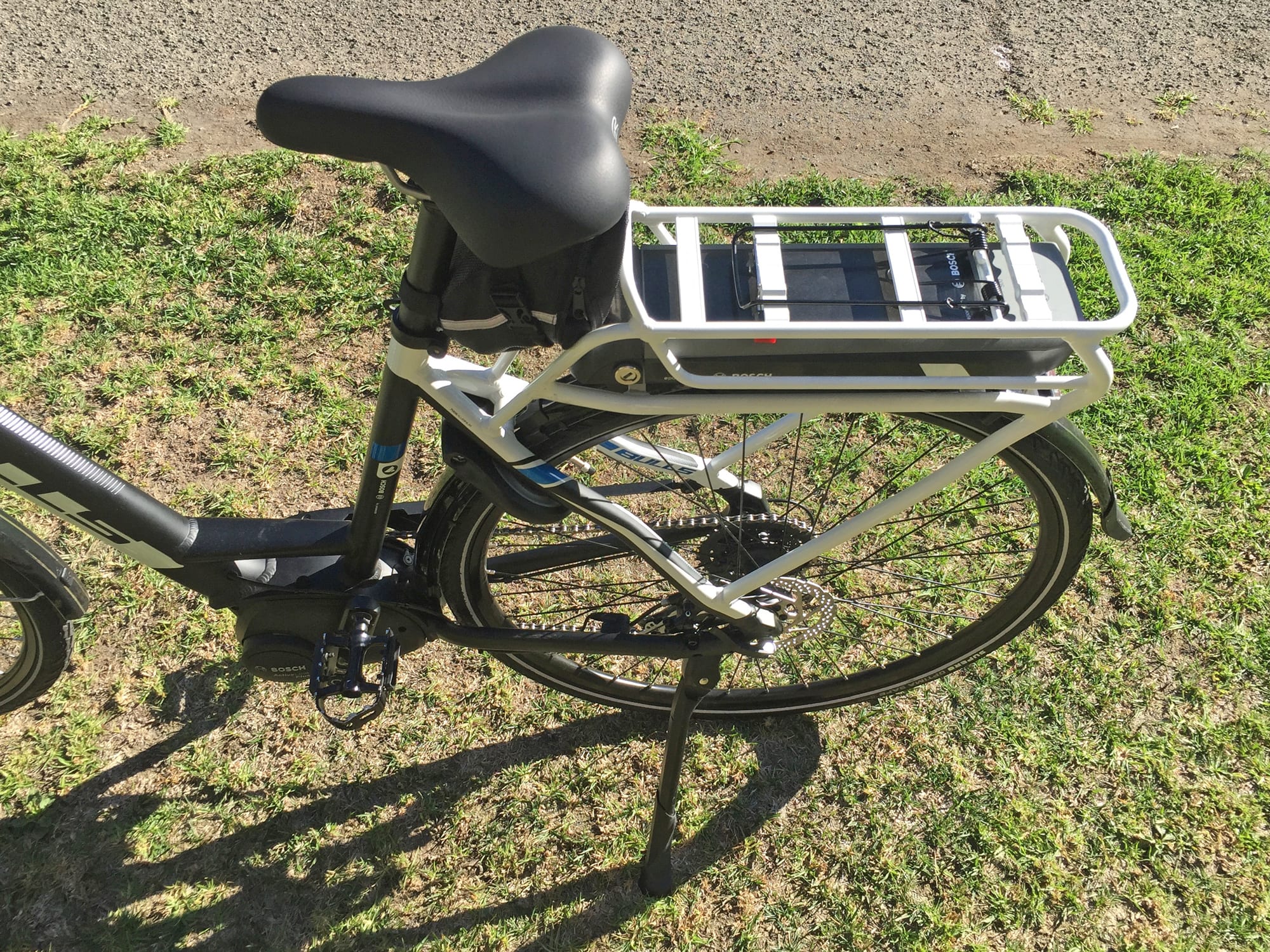
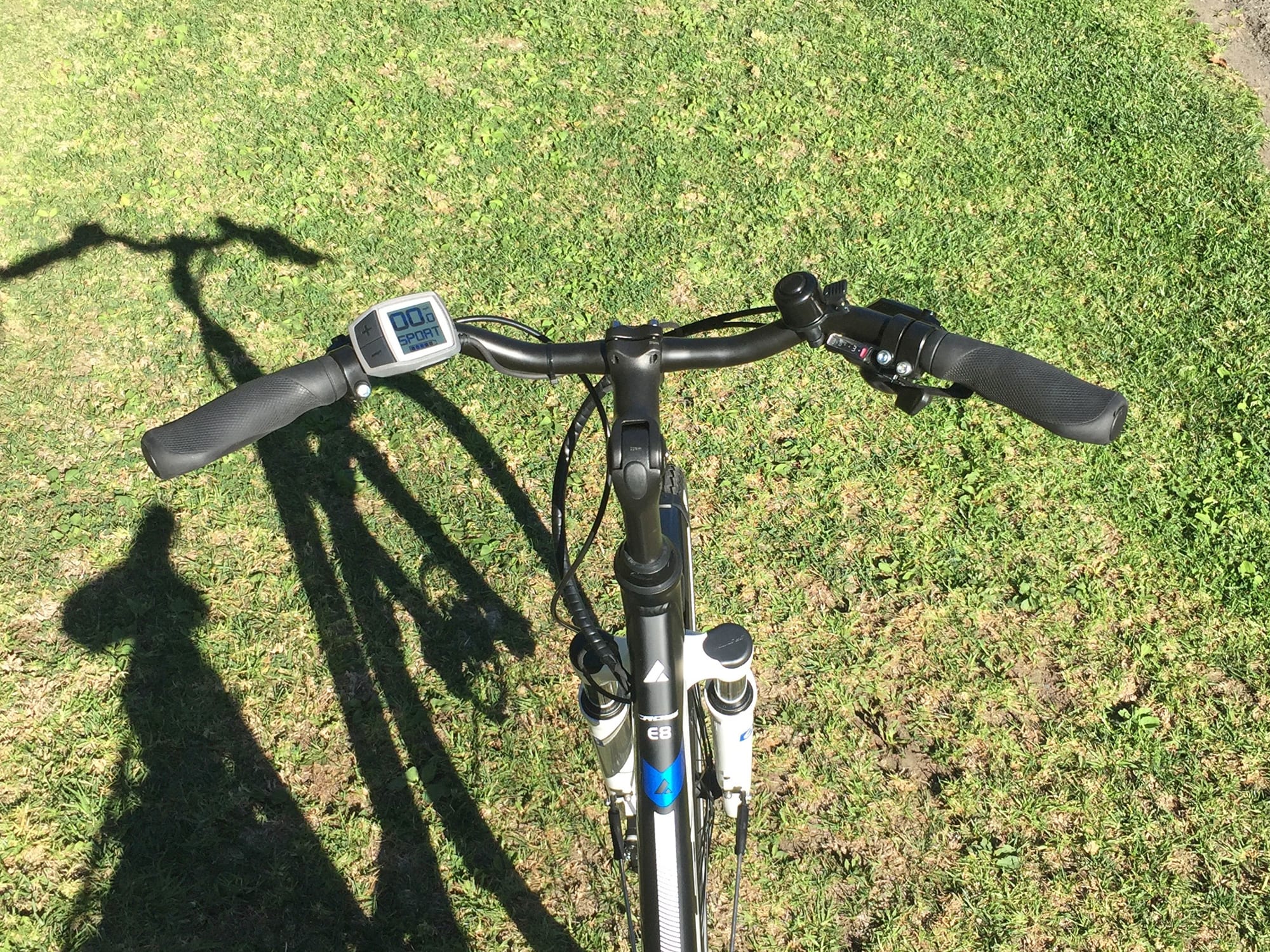
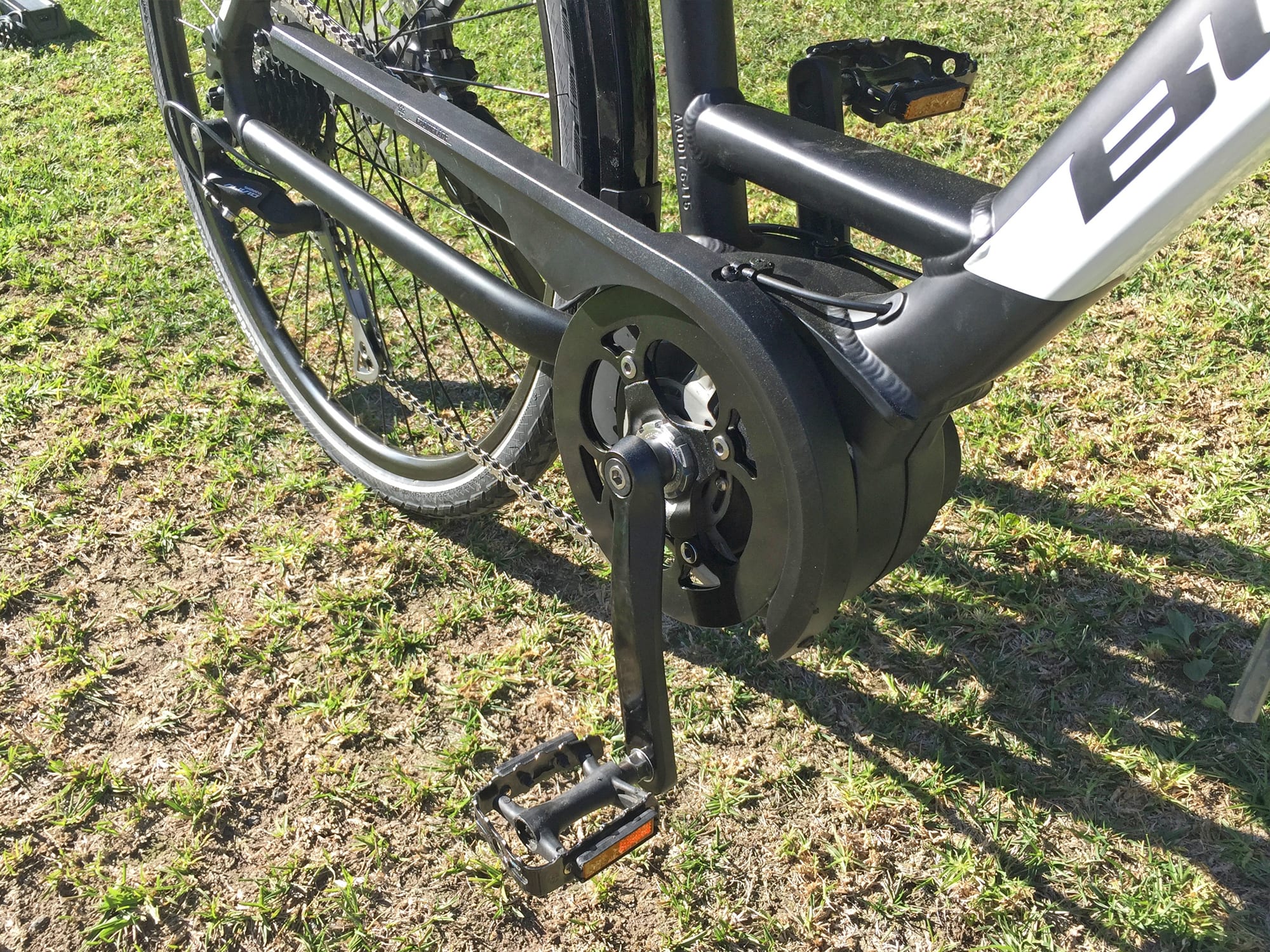

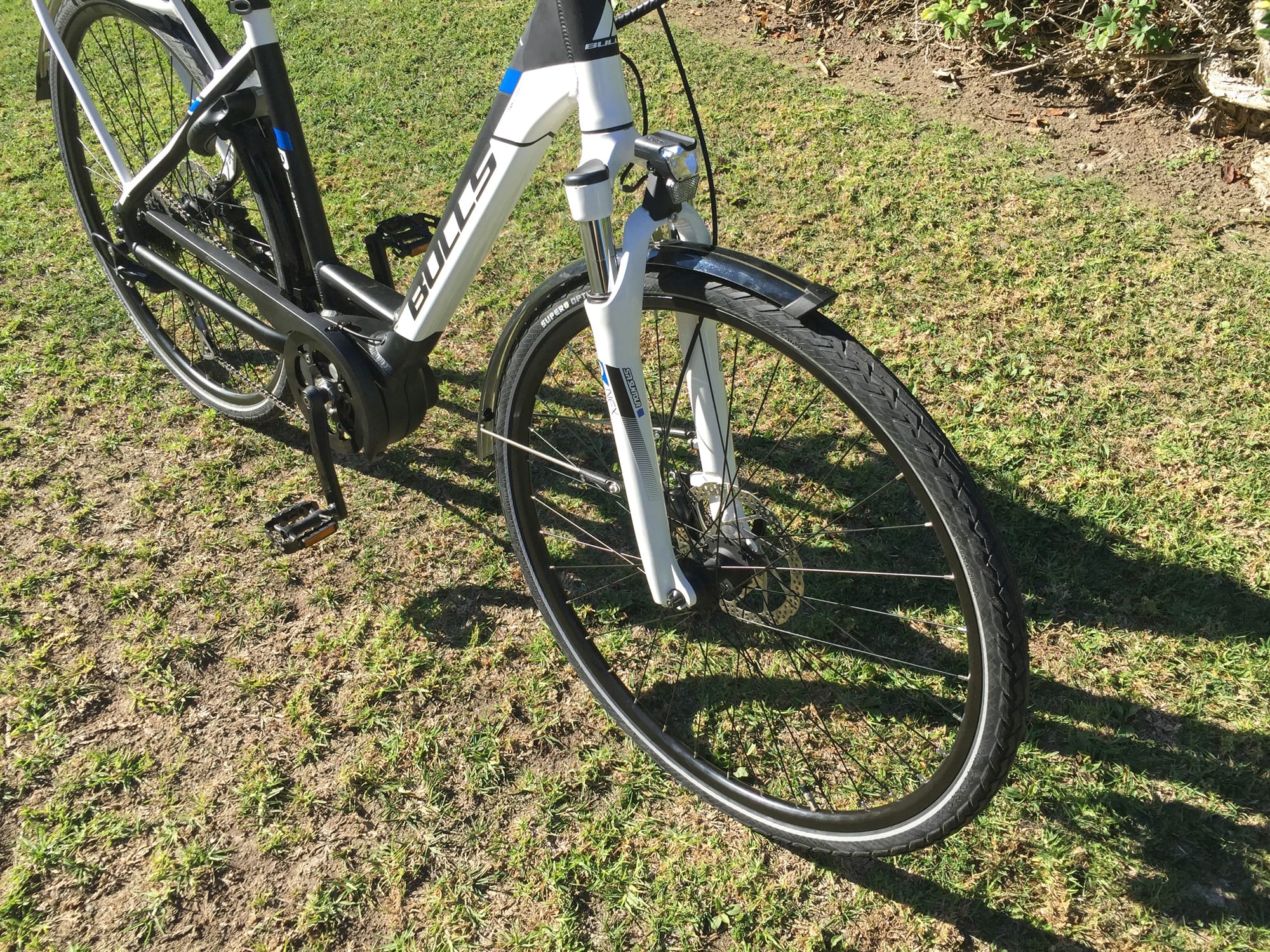


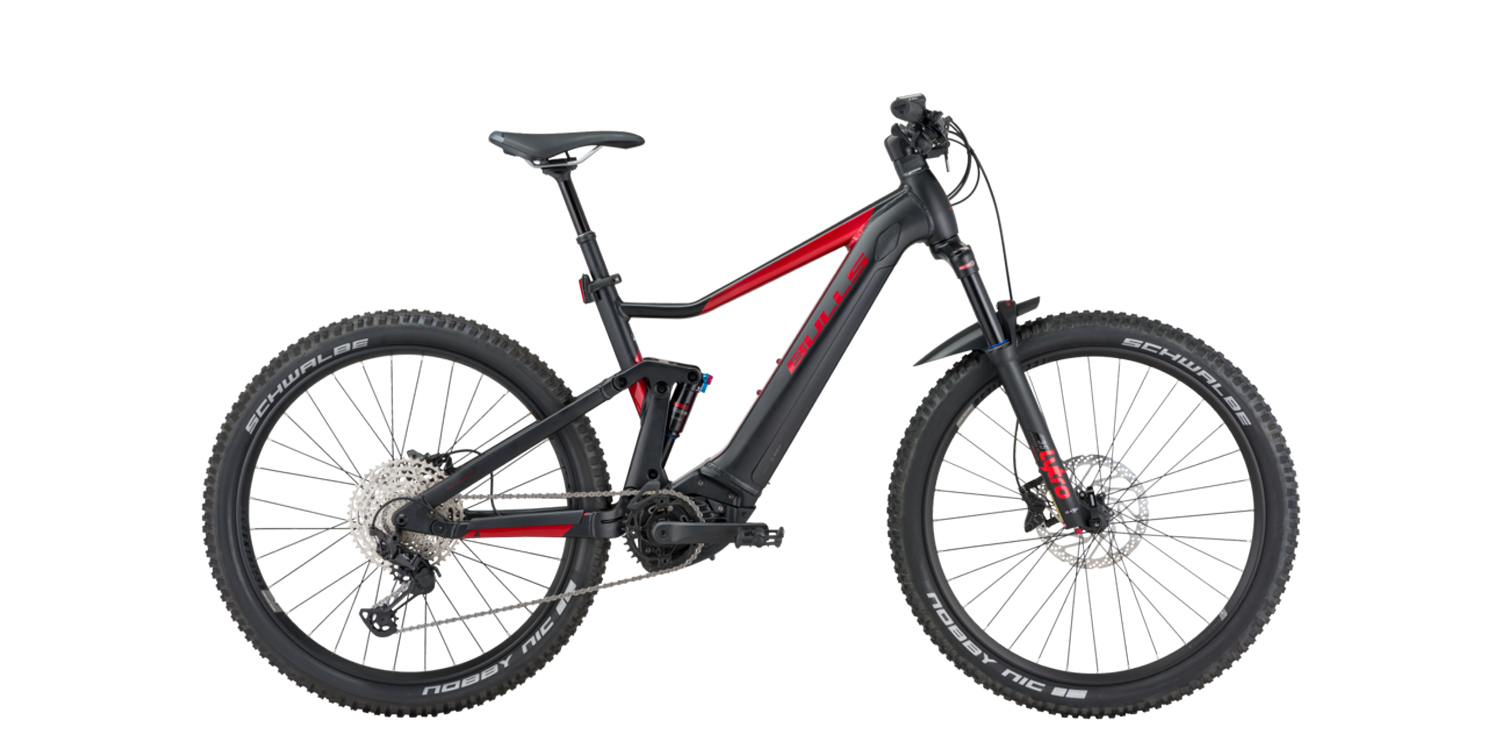
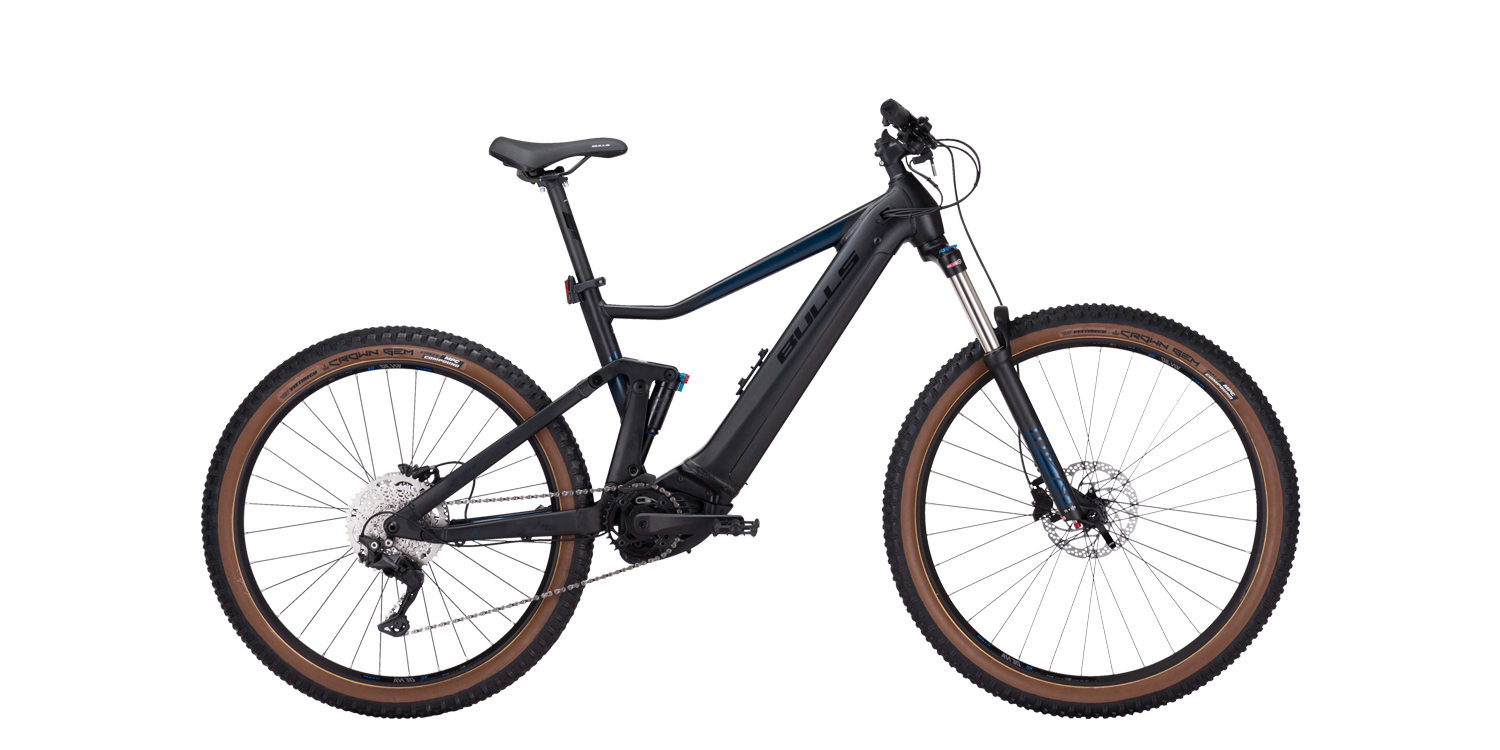
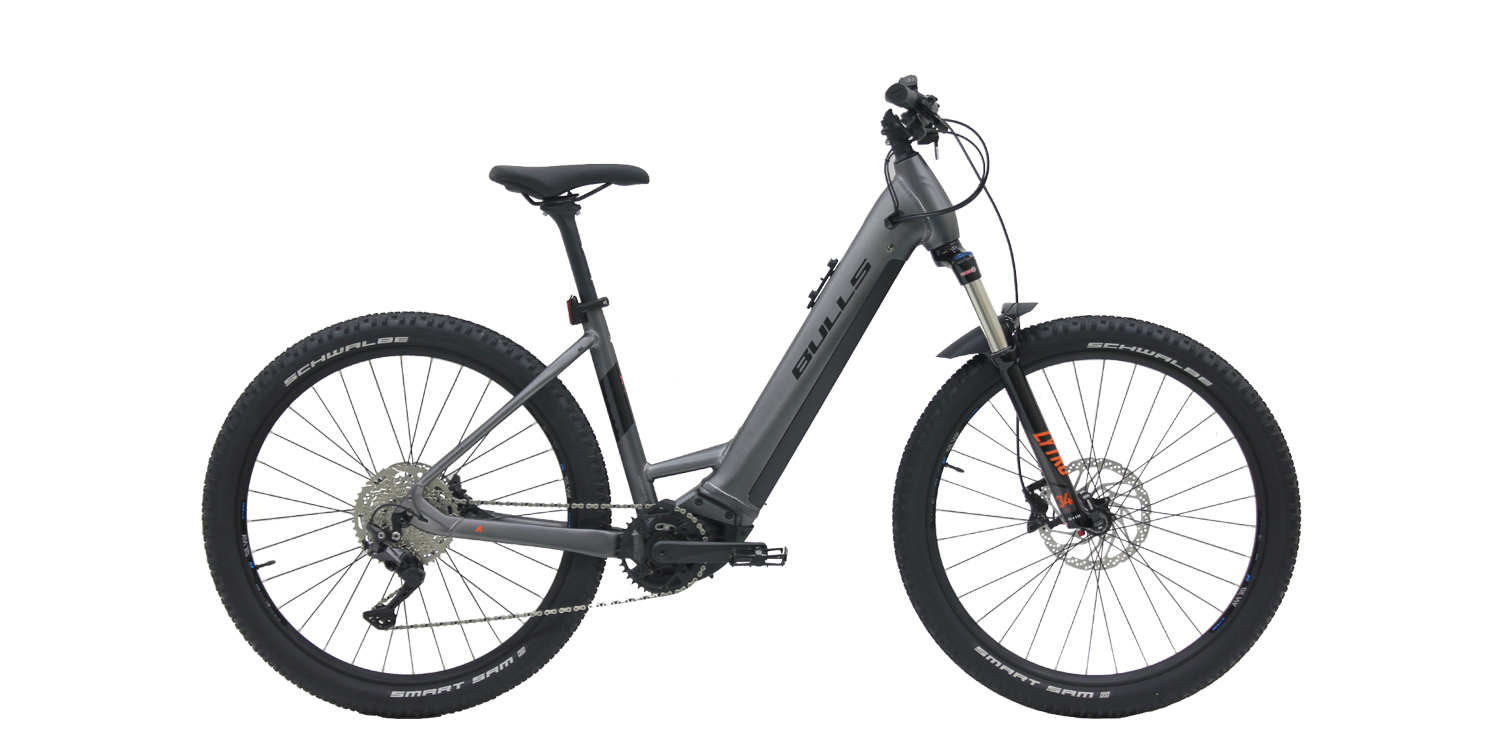
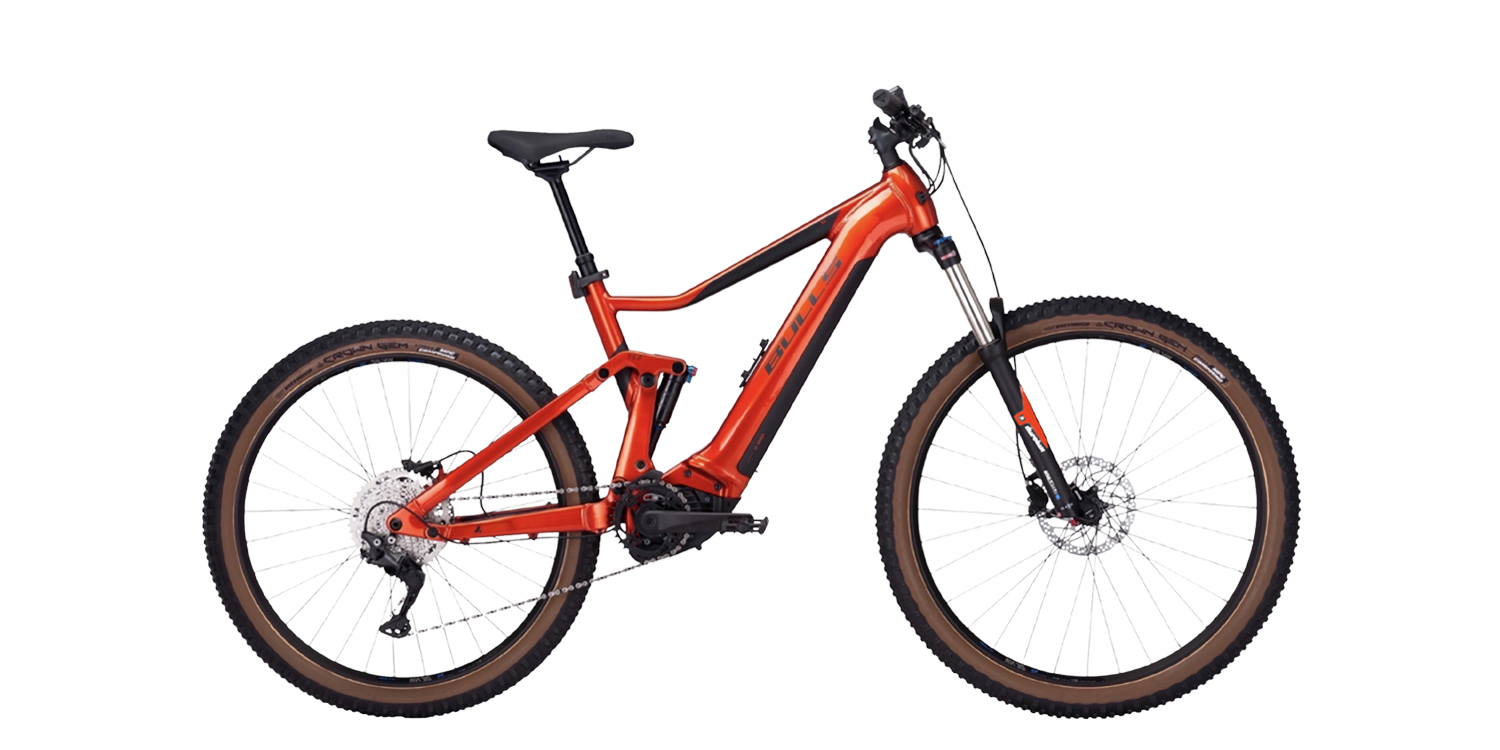
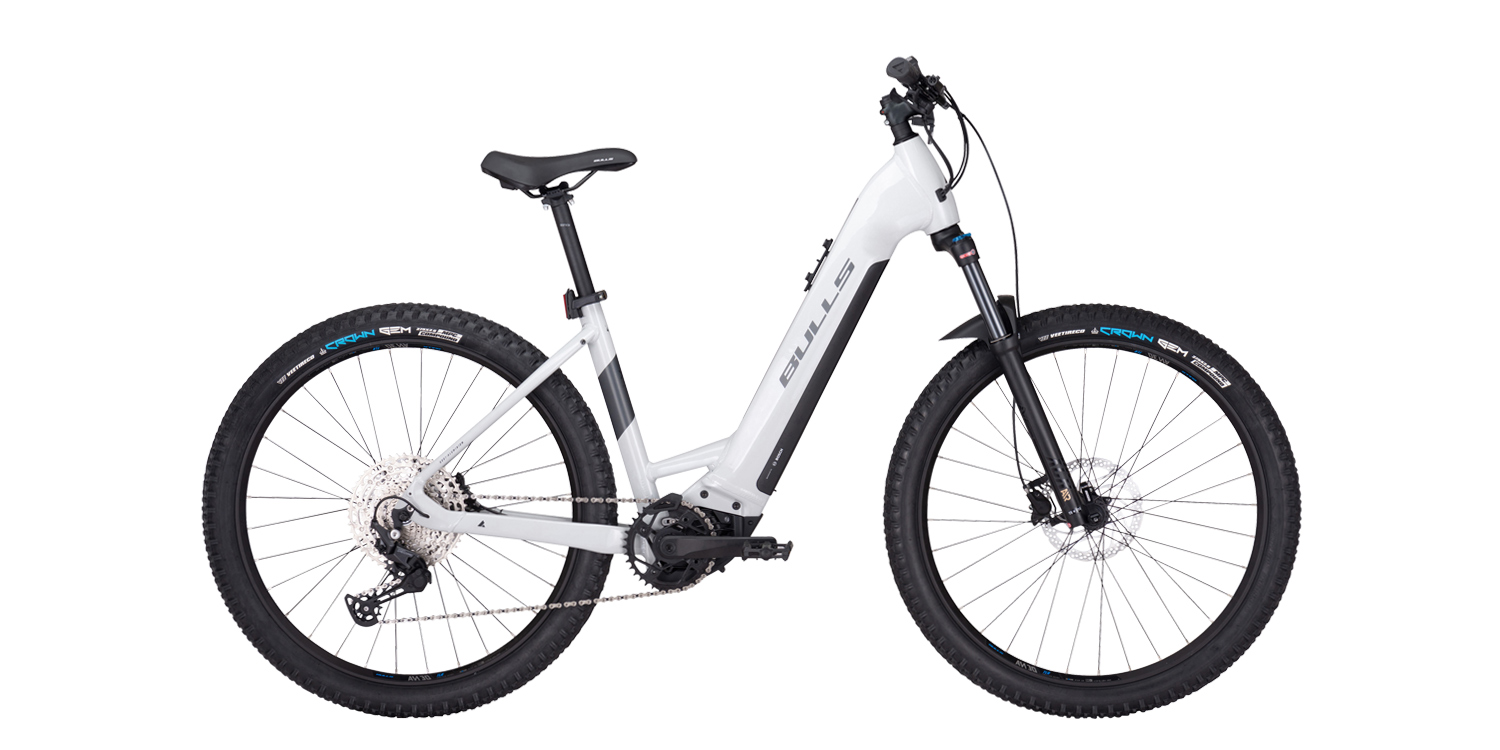
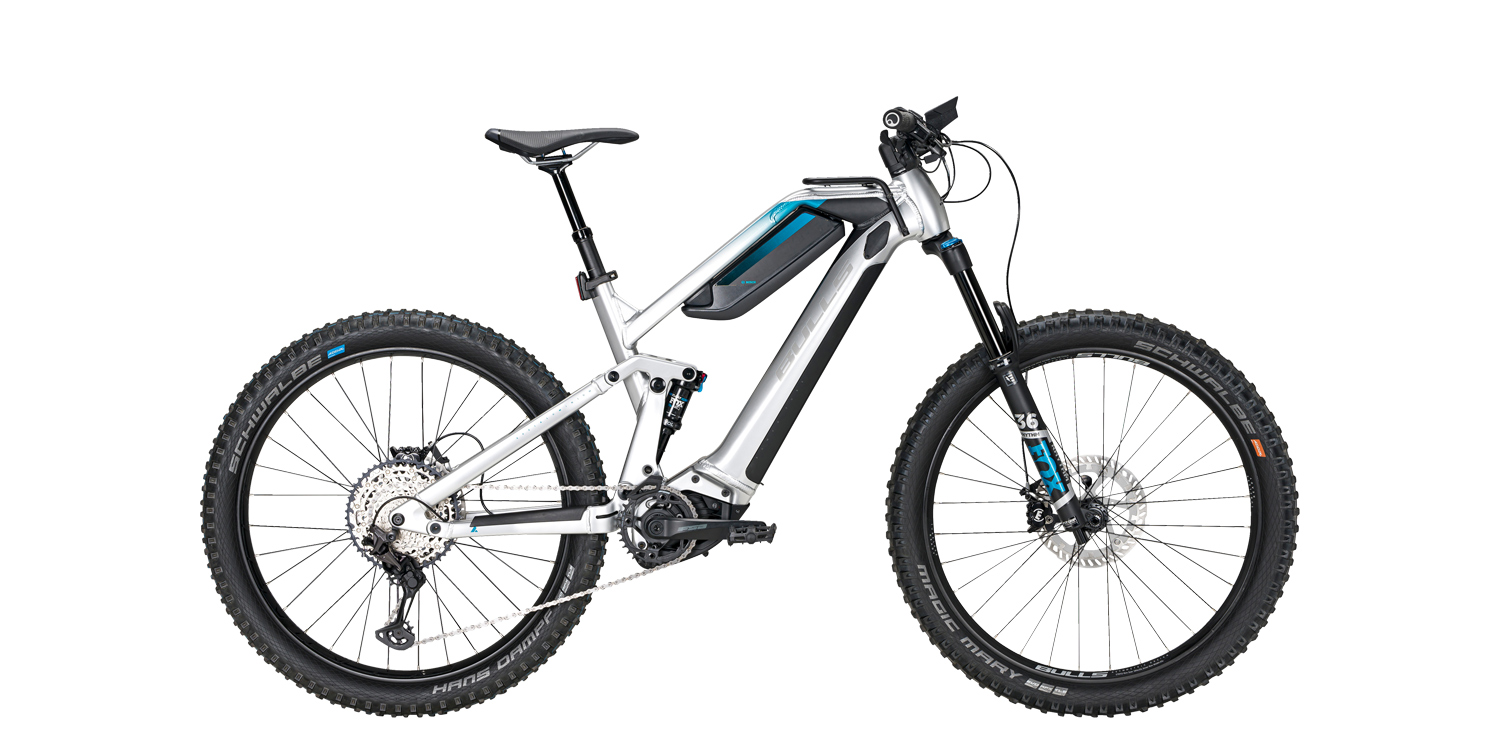
Reader Interactions